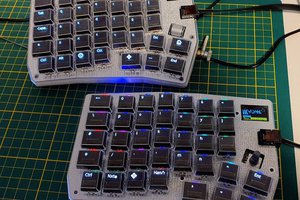Hardware Specs / Function
It's a dumb terminal. It doesn't do anything. You can wear it around your neck. It's got a keyboard and a screen.
WHAT: This is a dumb terminal. That means it doesn't compute anything. This is not a computer, it is effectively a teletype you can put in your pocket. To use this device, you must connect it to a computer. Again, this hardware does nothing, because it is a dumb terminal.
WHY: doesn't this do anything? Because it's a dumb terminal you can fit in your pocket You can connect it to other computers! Again, this is a dumb terminal, with a keyboard, that will fit in your pocket. Because this should exist. Oh yeah, you might be able to put a Raspberry Pi in it, so that it can become a computer.
WHAT: up! We're three cool guys looking for other cool guys who want to hang out in our party mansion! Nothing Sexual. Dudes in good shape encouraged, but if you're fat, we expect you to find humor in the little things. Again, nothing sexual.
TWITTER: Yeah go here or something
SPECS: Built around the ATSamD21 series of microcontrollers and an 800x480 pixel display. It has a silicone keyboard (like a remote control), and enough space for a big 'ol LiPo battery. Ports are USB-C and a DE-9. That's it.
 Benchoff
Benchoff







 deʃhipu
deʃhipu


 thpoll
thpoll
Love this project, hope to see it in a kit form soon? It is actually quite a fancy little device, it could be used with many SBC (single board computers) for example that rely on serial I/O for interaction. As far as really dumb terminals, here is one I wrote in microcode: https://hackaday.io/project/172073-microcoding-for-fpgas/log/178441-proof-of-concept-tty-to-vga